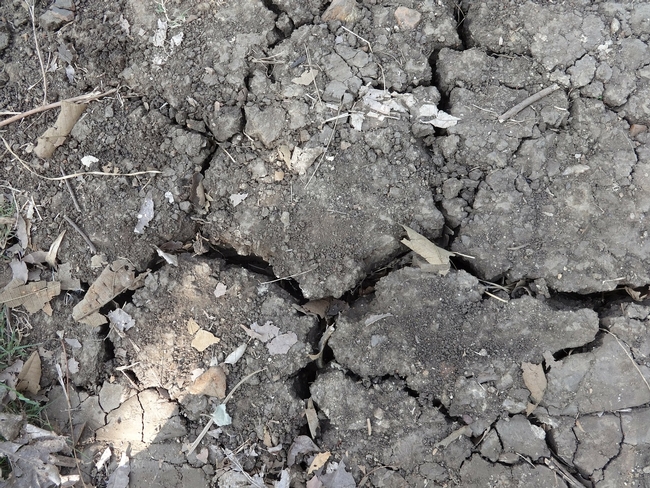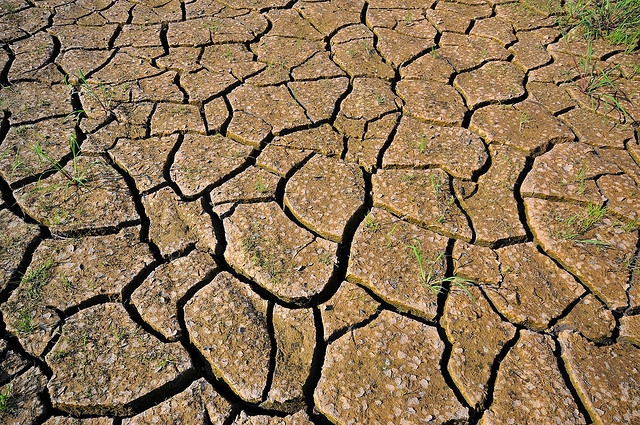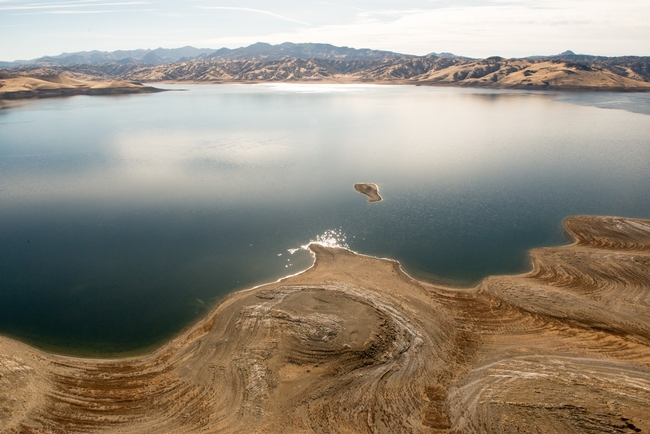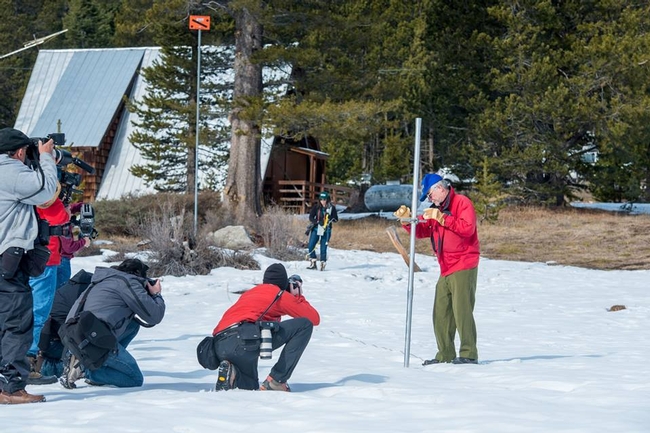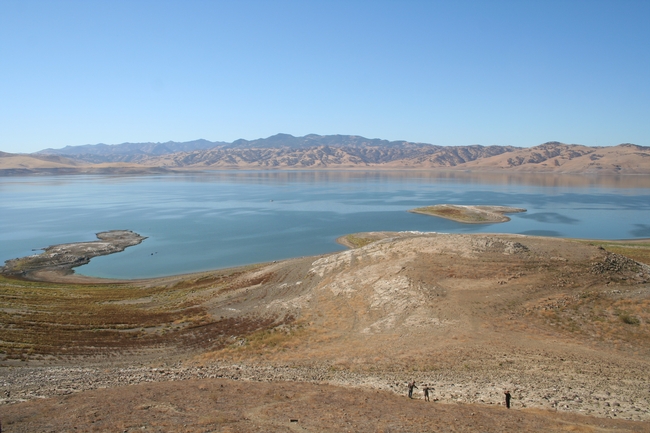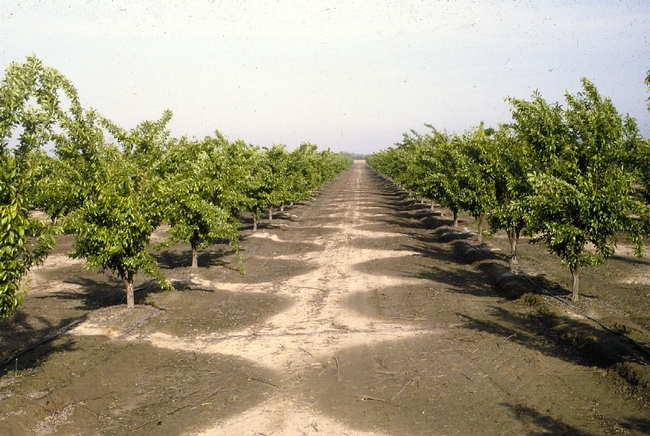Posts Tagged: Doug Parker
Don't know much about hydrology
Nathanael Johnson of TheGrist.org set about clarifying some myths related to California's drought situation, leading him to declare - according to the article's headline - "Everything I thought I knew about water in California is wrong."
The first myth he debunked has been circulating since Gov. Brown announced steep water cutbacks for the state's municipalities. "He didn't mention agriculture, and that made people suspicious," Johnson wrote.
For clarification, Johnson spoke to Doug Parker, the director of UC Agriculture and Natural Resources' California Institute for Water Resources. Brown didn't talk about ag in his big announcement because growers are already operating under an 80 percent cut from their normal water share from the State Water Project, and a zero percent allocation from the federal Central Valley Project.
"California farmers took about 5 percent for their land out of production last year, and that number will surely go up this year," the article says.
Other myths tackled in the story include:
- Agriculture uses 80 percent of California's water
- Dumb laws prevent the buying and selling of water
- Farmers are wasting a lot of water
- Farm conservation measures can free up plenty of water
Unrelenting groundwater use diminished farmers' ability to tap the resource during drought
The water shortage being experienced by farmers today is a manifestation of years of imprudent, unchecked groundwater pumping, and not solely due to the current drought, is not the most severe, reported the Christian Science Monitor.
"This drought has brought home to more people the truth that California is a dry place and we are not going to have all the water we want,” said Jay Lund, professor of civil and environmental engineering at University of California-Davis and director of its Center for Watershed Sciences.
According to Lund, limiting the use of groundwater in wetter years allows replenishment of groundwater basins, would allow municipalities and farms to later draw upon them during drought conditions.
Doug Parker, director of the UC Agriculture and Natural Resources California Water Resources Institute, concurred. He said the exhaustion of aquifers during non-drought years has meant that, under the current circumstances, farmers have had to drill ever-deeper to access water. But greater depths mean a more expensive process, leaving lower-income farmers at a disadvantage.
Farmers benefit from direct contact with the universities' extension officers, who advise them on best practices.
The UC ANR Cooperative Extension, for example, has hosted over 150 workshops totaling over 10,000 attendees, said Parker, who also noted that the UC system has been addressing water issues since 1880.
UC report provides another measure of California drought
Since the beginning of the drought three years ago, the amount of water in the Sacramento-San Joaquin watershed and in the Central Valley has dropped by 20 billion cubic meters, reported Brett Walton on the Circle of Blue website. These losses are in addition 30 billion cubic meters of water lost from 2003 to 2010.
The statistics come from analysis of GRACE data by researchers at the UC Center for Hydrologic Modeling at UC Irvine. GRACE - an acronym for Gravity Recovery and Climate Experiment - is a pair of NASA satellites that use changes in the earth's gravity to monitor fluctuations in total water storage, including water in reservoirs, the mountain snowpack, soil and aquifers.
Typically during drought years, farmers will use groundwater to grow crops. Modeling done by the U.S. Geological Survey shows groundwater levels dropping sharply in drought years. Researchers at the UC Center for Hydrologic Modeling used those data to demonstrate that the aquifers in the state's agricultural heart are being used unsustainably, the article said.
“The big question is really, ‘What's next?'” said Jay Famiglietti, director of the UC Center for Hydrologic Modeling. “If the drought continues as expected, it will push groundwater levels to potentially disastrous lows.”
Circle of Blue writer Walton spoke with the director of UC's California Water Resources Institute, Doug Parker, who also serves as a UC Cooperative Extension specialist. The institute is a UC Agriculture and Natural Resources program that integrates water research, extension and education programs at all 10 UC campuses to develop research-based solutions to water resource challenges.
Parker said California currently has no statewide policy on groundwater use, no reporting requirements and no permits to regulate the amount of water withdrawn.
“Groundwater is difficult to regulate in a drought, because it's the back-up source that people rely on,” Parker explained to Circle of Blue. “But sometimes drought is good, because it gets people to consider policy changes. Groundwater is what you need to have during a drought, so we want to make sure we're not using it poorly in wet years.”
California's three-part drought survival plan
In California, Siegler reported, water is moved through a network of dams, canals and pipes from the places where it rains and snows, to places where it is needed, like farms and cities.
"The system that we have was designed back in the 1930s through 1950s to meet population and land use needs of the time," Parker said. "Now things have changed in the state and that system really hasn't evolved to keep up with the times in California."
The system was designed when the California population was about 10 million. Now the population is 38 million. It was also designed during an unusually wet period of history.
"And the question is, how is that system going to perform in 2050?" Parker said.
The story outlines three ways the state is coping with the drought:
- A $7 billion water bond to upgrade that massive infrastructure system is on the Nov. 4 ballot. The measure would pay for building two new large reservoirs and the expansion of dozens more. There is also tens of millions of dollars earmarked for water recycling and reuse.
- Efficiency, such as capturing urban waste water, treating it and using it on farms. Passage of the water bond will allow for this strategy to expand.
- Water conservation. The example Siegler gave was an executive order by Los Angeles Mayor Eric Garcetti, which aims to cut freshwater use in his city by 20 percent in the next three years.
Listen to the NPR story here:
Farmers of the future will be happy about 2014 groundwater regulations
The new groundwater laws that Gov. Brown is expected to sign may not be popular with today's farmers, but tomorrow's farmers likely will look back with gratitude, reported Bettina Boxall in the Los Angeles Times.
"Some farmers are going to be having to cut back at least in the short run," said Doug Parker, director of the UC California Institute for Water Resources.
Thomas Harter, UC Cooperative Extension specialist in the Department of Land, Air and Water Resources at UC Davis, predicted the farmers' successors will appreciate the coming regulations.
"In the long run, my view is that the next generation and two generations down of farmers will find this a lifesaver," Harter said.
The bills waiting for the governor's signature won't provide an instant fix, the story said. The law will take years to implement and it could take decades for the most depleted groundwater basins recover.
In most years, groundwater amounts to 30 to 45 percent of the state's water supply, but in dry periods, it increases to 60 percent. The new law will direct local public agencies to develop sustainable groundwater management plans. If they fail, the State Water Resources Control Board steps in. The legislation gives local basin managers the ability to:
- Collect fees from groundwater users
- Monitor withdrawals
- Limit pumping
- Buy water or water rights to replenish aquifers
The Association of California Water Agencies supports the new regulations; agricultural interests are opposed, the article says.
"We thought these bills were too far-reaching," said Paul Wenger, president of the California Farm Bureau Federation.


